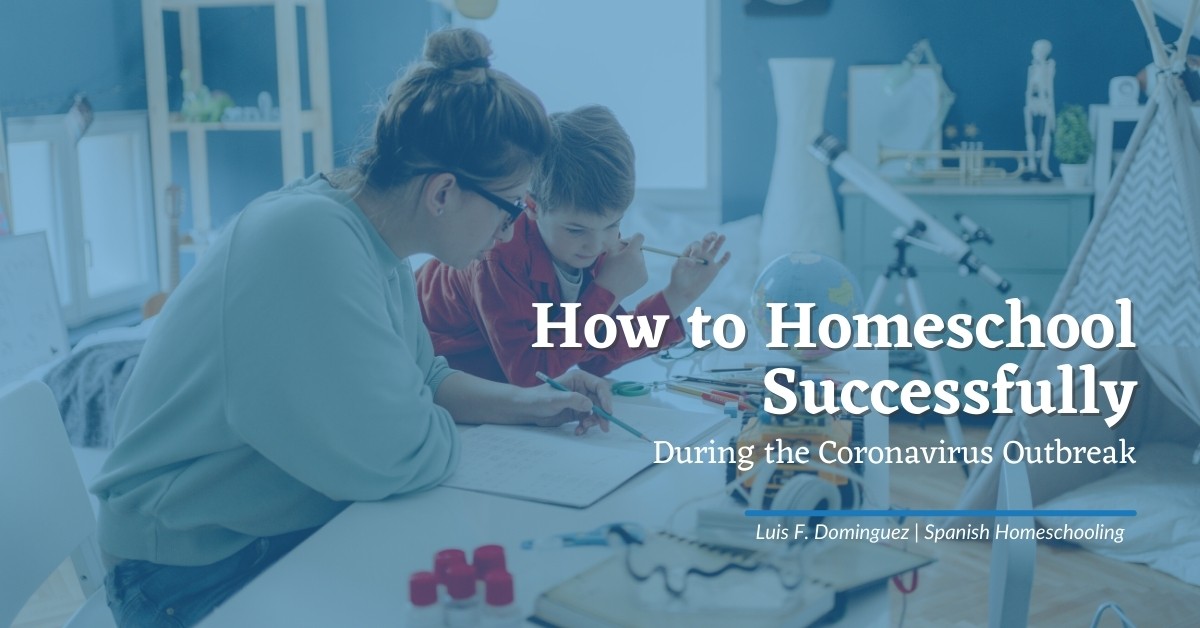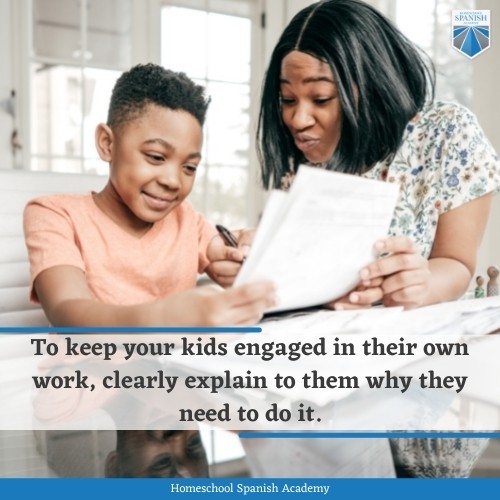
How to Homeschool Successfully During the Coronavirus Outbreak
Are your kids at home unexpectedly due to school closings across the United States (and elsewhere in the world) during the coronavirus crisis? A new challenge has suddenly arisen for parents: what’s the best way to homeschool your kids? Many parents have reacted by giving way to desperation and heavily praising teachers for what they do, but the truth is: taking full responsibility for your children’s education is absolutely possible.
While some schools and school districts are providing online learning activities, others are not equipped to roll out distance learning with such short notice. If you feel unprepared to cope with the academic needs of your child(ren), it’s natural and nothing to be ashamed of. Of course, the challenge is not limited to academics. Welcome to a whole new world of sharing space with your kids 24/7. Let’s examine 5 useful elements that will ease the transition to homeschool during the coronavirus outbreak.

1. Time Management
This might be the single most important thing when it comes to homeschooling. Kids need structure, and you will too if you are going to succeed. Good teachers are masters of time management. Are you struggling with one, two, or three kids? Imagine handling a group of 15 to 20 or more.
One of the best tips I’ve received as a teacher is to write the agenda for the day before students even arrive in the classroom. Knowing beforehand what they are going to do and learn reduces kids’ anxiety, so present your plans to your kids before you start. Once they know that they will work on math and Spanish that day, they mentally prepare for it. Additionally, by allotting time expectations to these activities, your kids will be able to better focus, knowing that they have a limited amount of time to finish their work on each subject.
The thing with homeschooling is that you don’t only have to organize your kids’ subjects and work, you need a schedule for the whole day if you don’t want things to get out of control. So, time management is important. How do you get it right?
Create A Schedule
The first rule of time management is to create a good schedule. Before you put pen to paper, think about your unique situation at home and consider what you want to accomplish during this time. Then, get creative and involve your kids in the process of making their own schedule. Think of it as the first activity of your new school.
You’ll find many good examples of homeschool schedules on the internet, and this COVID-19 Daily Schedule has been making the rounds in social media. Personally, I find this one helpful and flexible, especially for small kids. Find the one that is right for you, personalize it, and ask your kids to add their own style to it. That way, they’ll make it their own.
Set Priorities
Whether you’re focusing on the core subjects (math and reading) or keeping your children active and distracted during this time of crisis, everyone will have a different set of priorities. Identify yours and outline step-by-step strategies for achieving them.
If you’re interested in supplementing your child’s Spanish classes at home, sign up for a free class with our native Spanish-speaking teachers, or read the details of our programs for kids.
Include Play Time
Make sure to include recreational activities in your schedule. Kids need to reset and refresh. Every 50 minutes or so, take a break, have a cookie or a healthy snack, and then begin a new subject or activity.
This quarantine situation is hard for everybody, including kids. They’ll miss their friends and the games they used to play with them. Be smart with your scheduling and include fun things to do, like stuff you know the kids will look forward to. That will be motivating for them—and it will help to keep the peace in your home.

2. Screen Time
How much is too much screen time? The answer depends on your unique homeschool situation. How do your kids work? Do they need an electronic device to do their homeschooling? If so, what about their social interactions? Since they can’t see their friends during this time of social isolation, they’ll rely more on digital communications to get in touch with friends, and you need to consider that too.
Understanding that each situation is different and that you need to find the right balance for your children’s screen time, some experts recommend between 30 and 45 minutes for young homeschoolers and between 45 and 2 hours for older homeschoolers. Keep in mind that these are times recommended for normal homeschooling, not coronavirus-induced homeschooling. Your kids’ screen time needs may be different during this crisis.
3. Keeping The Kids Engaged While You Work
Imagine that you’ve created a beautiful schedule and set clear rules regarding screen time. Now you are ready to start working. But I’m talking about you, not about your kids. How do you manage to do your own work while making sure that your kids do theirs? This is possibly the most frustrating part of homeschooling for some parents.
To keep your kids engaged in their own work, clearly explain to them why they need to do it. This will help them understand the purpose of the task at hand. Also, provide your kids with an element of choice, like naming their “new school” or picking from a selection of snacks for the day. Fun little details like that are excellent sources of motivation.
Encourage independence in your kids to assist you in keeping them focused on their own work. Of course, the level of independence will vary according to their age. It’s helpful to set clear deadlines when you are trying to develop your kids’ independence.

4. Curricula and Other Resources
You’ll be surprised to discover the amount of online educational resources available for your homeschool project. It’s a huge world and is likely to be overwhelming if you don’t know where to look or how to choose the right ones for you.
To avoid feeling inundated by the endless possibilities, start by checking first with your kids’ school as most of them have scrambled to provide resources and educational platforms for parents in your exact situation.
At Homeschool Spanish Academy, we have created a resourceful list of quality online learning resources for you, along with ways for you to transition to remote homeschooling. The list provides links to pre-made curricula in a wide variety of subjects, ranging from STEM to Spanish, and spanning all ages. Here’s another good catalog of online resources.
5. Consider “Unschooling”
Unschooling is an approach that can be helpful during your homeschooling adventure. It is a natural method that focuses on the interest of the kids and is actually led by the children themselves. Think of it as an opportunity to learn from everyday life. Unschooled kids learn by exploring the world around them.
Unschooling gives you a chance to explore new ways of learning and let your kids’ creativity and imagination expand.
Homeschooling in Spanish
We’ve covered how to do general homeschooling, but what about Spanish homeschooling? The coronavirus outbreak is providing an opportunity for you to introduce your kids to a new language and include it in their homeschool routine. Sign up for a free class with one of our certified teachers at HSA, and make the most of this time at home with your children.

Learn more about HSA:
- The Best Homeschool Spanish Curriculum at HSA
- Tracing the Beginnings of Homeschool Spanish Academy
- Learning Español: Tailored Classes for Schools
- Elevate Your Classroom: Spanish Teachers for Schools
- Top 5 Accredited Homeschooling Programs in 2023
- Homeschool Spanish Academy Reviews: Top Choice for Language Learning
- Homeschool Spanish Academy vs LingoKids
- Homeschool Spanish Academy vs the Cultured Kid
- All You Need to Know About Spanish as a Second Language - July 11, 2024
- The Best Homeschool Spanish Curriculum at HSA - June 13, 2024
- 20 Most Common Subjunctive Triggers in Spanish - May 23, 2024




